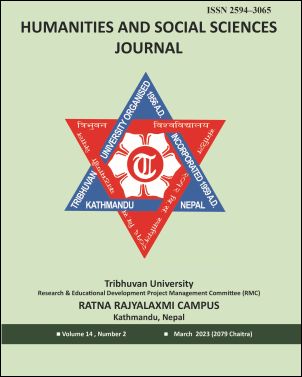Non-Linear Relationship Between Remittance Inflow and Inflation in Nepal: An NARDL Approach
DOI:
https://doi.org/10.3126/hssj.v14i2.58085Keywords:
dynamic multiplier, inflation, inflow, policymakers, remittanceAbstract
This paper examines non-linear relationship between remittance inflow and inflation in Nepal on the basis of time series data. The Zivot unit-root testing, which permits a single substantial break in the model, the NARDL cointegration analysis, which was used to check for the presence of the structural break, and the examination of the long-run asymmetry connection were the econometric techniques used in the study. Findings of the study indicate being a long-term asymmetric cointegrating link between remittance inflow and inflation. It was found to be positive shocks of inflation subsequently increasing remittance inflow in Nepal. According to the asymmetric dynamic multiplier, the positive shock contributed more to raise inflation multiplier over time than that of the negative shock. The government of Nepal needs to develop a thorough plan for the efficient use of remittances initiating efficient policies. The findings of the study might be helpful to policymakers to create an effective plan for reducing inflation created by remittance inflows.




